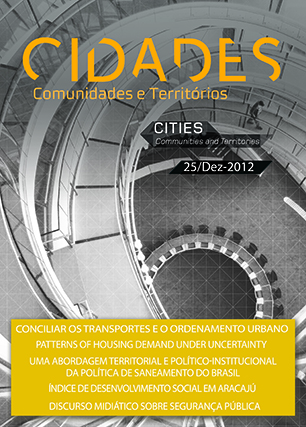Índice de Desenvolvimento Social em Aracaju – SE
A realidade urbana em 2000 e em 2010
Mots-clés :
crescimento urbano, sectores sensitários, geoprocessamento, favelasRésumé
A dinâmica económica em Sergipe, a partir dos anos 70, intensificou a migração para Aracaju e municípios adjacentes, provocando um novo cenário urbano, especialmente na capital. Mudanças desse processo impactam diretamente no desenvolvimento social da população e refletem na qualidade de vida. Apesar dessas mudanças, Aracaju é considerada, desde 2005, a capital da qualidade de vida. No entanto, essa qualificação não considerou alguns aspectos relacionados ao desenvolvimento social, bem como o aumento de assentamentos irregulares conhecidos como favelas. Assim, este estudo procurou calcular o Índice de Desenvolvimento Social - IDS de Aracaju, avaliando as mudanças na realidade urbana nos anos de 2000 e 2010, em paralelo à distribuição espacial das favelas. A metodologia adotada baseou-se na proposta de Cavallieri e Lopes (2008), utilizando algumas dimensões para caracterizar o cenário urbano: acesso a saneamento, qualidade da moradia, escolaridade e renda disponível, com base em dados por setores censitários, disponíveis por censos realizados. pelo IBGE em 2000 e 2010. Os resultados mostraram mudanças na malha sócio-espacial da cidade. Essas mudanças refletem que os impactos do crescimento urbano nem sempre são acompanhados pelo suprimento necessário de infraestrutura, moradia e serviços sanitários nos setores censitários que compõem a Área de Expansão Urbana e as áreas periféricas oeste e norte / noroeste. Por outro lado, os resultados mostraram desenvolvimentos positivos nos setores que compõem as regiões nordeste, central e centro-norte da cidade.
Téléchargements
Publié-e
Numéro
Rubrique
Licence
CIDADES, Comunidades e Territórios by DINÂMIA'CET-Iscte is licensed under a CC-BY licence.






